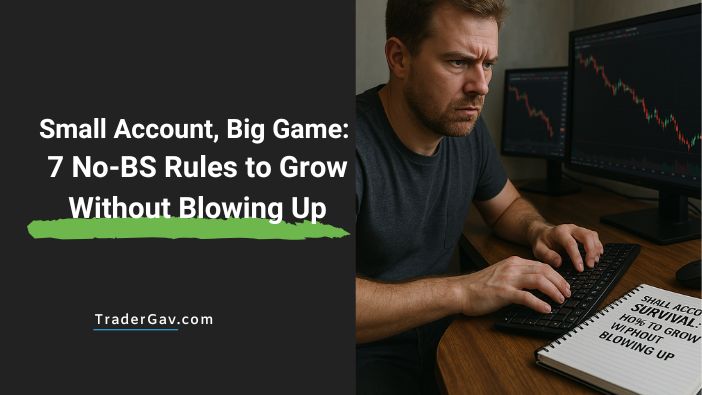
It started with a $300 account.
I had a cheap desk, two monitors, and way too much confidence.
Price was pushing into a previous high. I saw imbalance, displacement, all the good stuff.
I hit buy, risked 10% like a cowboy.
Ten minutes later? Stop-out.
No follow-through, no retest, just a red candle straight through my ego.
Sound familiar?
Yeah, I’ve been there.
This post is for the trader who’s not trying to impress, just trying to survive.
Let’s get real.
1. Stop Dreaming. Start Risking Smarter.
“I’ll flip this small account in a month.”
No, you won’t. And if you do, you probably won’t keep it.
Risk small, or die fast.
That’s the game.
Risk 0.5% to 1% per trade. Not because it’s “safe”, but because it gives you more chances to stay in the ring.
Think about it:
You can take 50 small losses and still have chips left to play.
One oversized position? That’s game over before the second round.
2. If You’re Not Using Micro Lots, You’re Handcuffing Yourself
Trading small size without micro lots is like trying to thread a needle with boxing gloves on.
You can’t precision-risk. You can’t scale. You can’t control your exposure.
So here’s the rule:
Micro lots or no trades.
If your broker doesn’t offer them? Switch. No debate. You need tools, not hand-me-downs.
3. Tight Stops Don’t Mean Smart Stops
Be honest. Are your stops based on price action, or your account size?
If you’re setting 5-pip stops just to squeeze in bigger lot sizes… you’re not trading, you’re hoping.
Stops should be logical, not emotional.
Structure-based.
Behind a swing. Below a gap. Beyond a liquidity pool.
Your sizing adjusts to the stop, not the other way around.
4. You Don’t Need More Trades. You Need One Good One.
Chasing setups all day? That’s not strategy. That’s insecurity.
Trade less. Think more.
One clean, high-probability setup beats five forced entries every time.
Every trade you don’t take? That’s discipline in motion. That’s the edge sharpening.
It’s not about how many times you swing. It’s about hitting clean.
5. Lock Into One Pair and Learn Its Soul
Forget trying to master six different markets.
Pick one. Learn how it breathes.
For me, it’s USDJPY in the Asian session.
It moves with intent, respects structure, and doesn’t fake you out just for fun.
Learn when your pair trends, when it chops, and when it’s baiting breakouts.
You’ll stop guessing and start anticipating.
6. Progress Isn’t a Dollar Figure. It’s Your Process
“I only made $7 this week…”
Yeah? But did you:
- Stick to your plan?
- Control risk?
- Log your trades?
- Stay patient?
Because if you did, that’s a win.
Profit is the result. Process is the skill.
If you can’t trade with discipline at $500, don’t expect to suddenly develop it at $50,000.
7. Adding to a Loser? That’s Not Conviction. That’s Coping.
Let me say it straight:
You are not a hedge fund. Stop averaging into pain.
Adding to losers on a small account is like trying to patch a leak with gasoline.
You’re speeding up the blow-up.
Take the loss. Review it. Re-enter only if the market resets.
Otherwise? Let it go. Your capital is your ammo. Don’t waste it on wishful thinking.
Final Thought: You’re Not Behind—You’re Building
Look, I get it.
Everyone’s flexing wins on socials. Everyone’s doubling accounts in demo land.
But that’s noise. You’re building the real thing.
Slow, solid, unshakable skill.
Every disciplined trade is a brick.
Every mistake you study is a blueprint adjustment.
So yeah, your account’s small. So what?
The mindset you’re building? That scales.
Let’s Talk
What’s your biggest challenge trading small?
Sizing? Patience? Revenge trades?
Drop a comment or shoot me a message.
We’re in the trenches together and we’re not going anywhere.


Leave a Reply